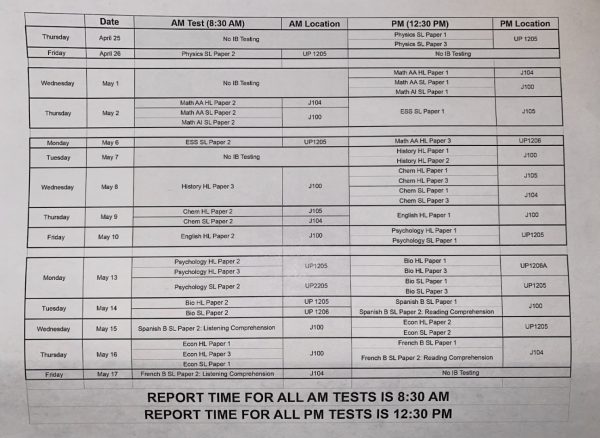ASIAN AIR POLLUTION INCREASES AT ALARMING RATES
March 7, 2015
Air in Asia has recently gotten worse due to dust storms.
Photo By: Brea Jones, Photographer
By: Michelle An, Copy Editor
On January 26, 2015, NASA released a video demonstrating the alarmingly rapid spread of air pollution from China and India towards the Western Hemisphere Air. Always an infamous topic for politicians and environmentalists alike, Asia’s air pollution has been brought back to the center of attention as researchers gain ground on how it affects the weather and global climate.
Sophomore Sam Reno says, that some of the factors that contribute to the heavy pollution in the environment are “overpopulation, harmful gases from factories getting released into the air, burning of trash, cars, and smoking.”
In the animation by NASA, aerosol emission and transport from September 1, 2006 to April 10, 2007 is shown to have traveled all the way to the Americas and the poles. According to the NASA website, the primary cause of Asian air pollution is “an unwanted byproduct of coal-fired economic development.”
The main concern arising as a result of the Asian air emissions, researchers say, is not the pollution itself, but in the effects the emissions have on global weather and climate. Researchers at NASA’s Jet Propulsion Laboratory and California Institute of Technology, led by Jonathan Jiang and Yuan Wang, designed a numerical model including weather factors and aerosol transport to perform two sets of simulations. One simulation used aerosol concentrations prior to the Industrial Revolution and the other used the current amount of aerosol emissions to demonstrate how increased pollution affects the weather and climate.
The results of NASA’s research indicated that Chinese air pollution “affects cloud development in the North Pacific and strengthens extratropical cyclones,” says Wang. In terms of weather, this means that large storms would produce periods of heavy snow and intense cold during U.S. winters and springs. The reason for this heavy fluctuation in weather is due to the strong water condensation on aerosols during storms where energy is released as heat that contributes to airflows within a cloud that causes it to grow bigger and bigger. Although this research was primarily done with the North America as their scope, further analysis suggests a much more profound impact.
Junior Anupa Thirmiya says, “I think that pollution has become so widespread that even if there [were] ideas imposed on citizens, it would be hard to ‘fix’ pollution. As I’ve been to India several times, I see the air and cleanliness has decreased. Even if the government tried to impose a law to conserve the environment, I feel it may be impossible to fix it as the population is continuously growing and the general wealth of citizens is decreasing.”
United Nations officials have already been called to attention by the dying air quality in the Asia-Pacific regions of India and China as well as other countries. The UN responded by releasing an article calling for urgent action to remedy the atmosphere in Asian countries by identifying multiple sources for the air pollution as well as requesting governmental action.
AP environmental science teacher, Mr. Kris Cole, discusses various methods and solutions to reduce pollution in general. Reducing fuel use by carpooling to various places is an efficient method to reduce the amount of chemicals that go off into the atmosphere. Surprisingly enough, conservatively using electricity is another way people can reduce the amount of air pollution there is as electricity is powered by plant oils or coal. A possible alternative to using electricity, Cole suggests, would be using solar energy, given that scientists find a cheap and efficient way to store it.
Experts continue conducting research to gain a more complete understanding of the global effects of Asian air pollution, taking frequent measurements of the atmosphere, simulating climate movements, and analyzing weather patterns using satellites.



































